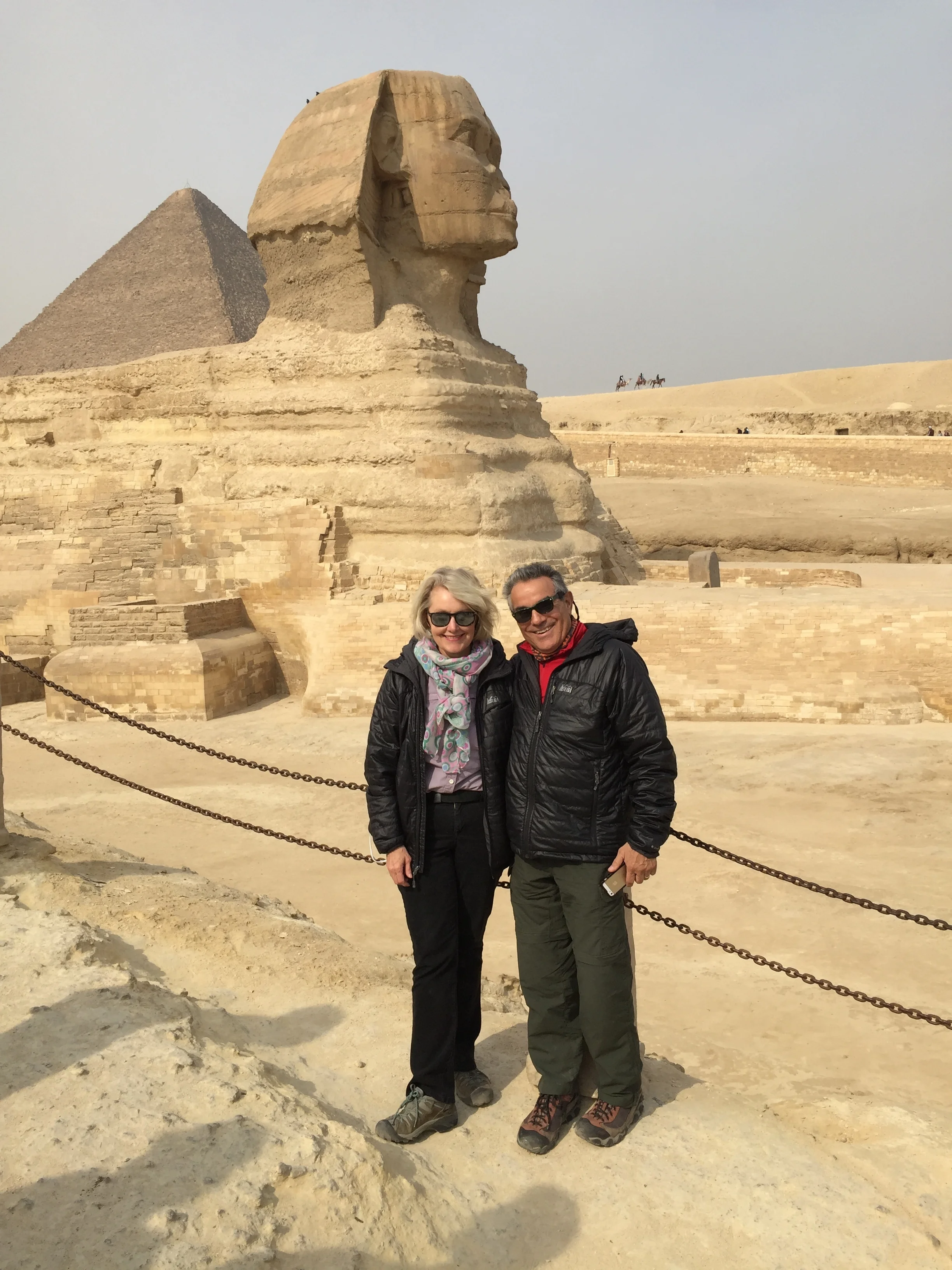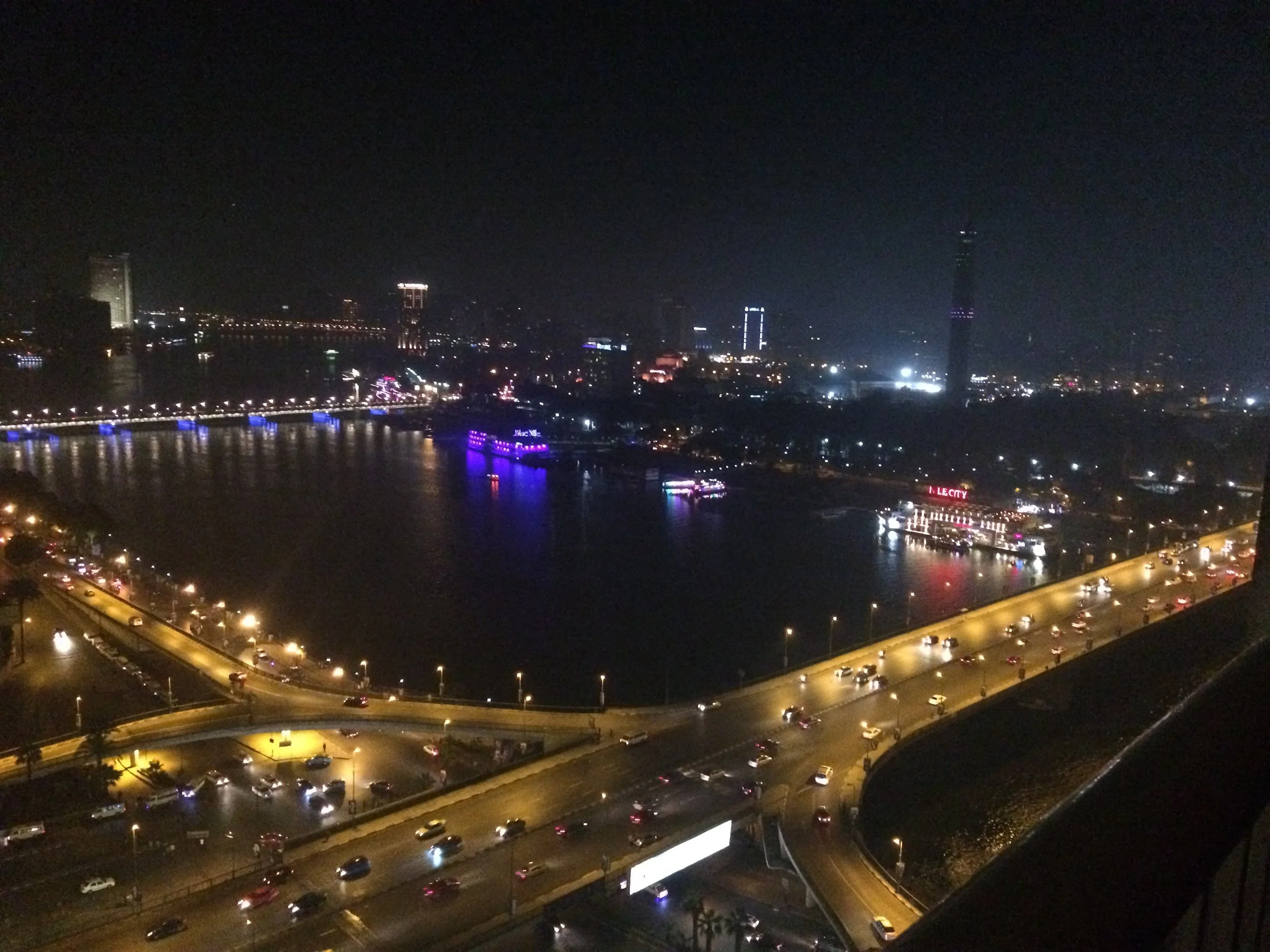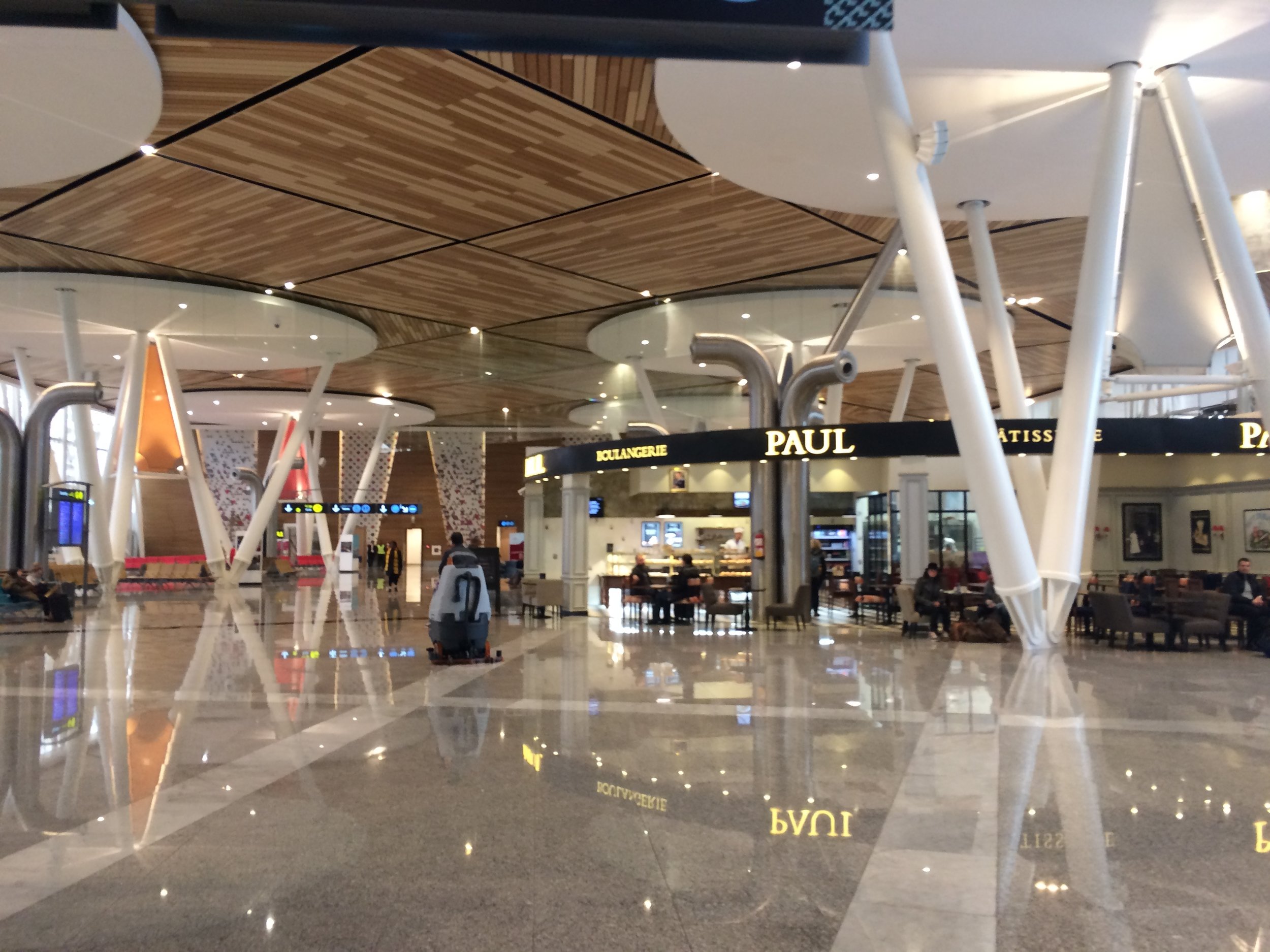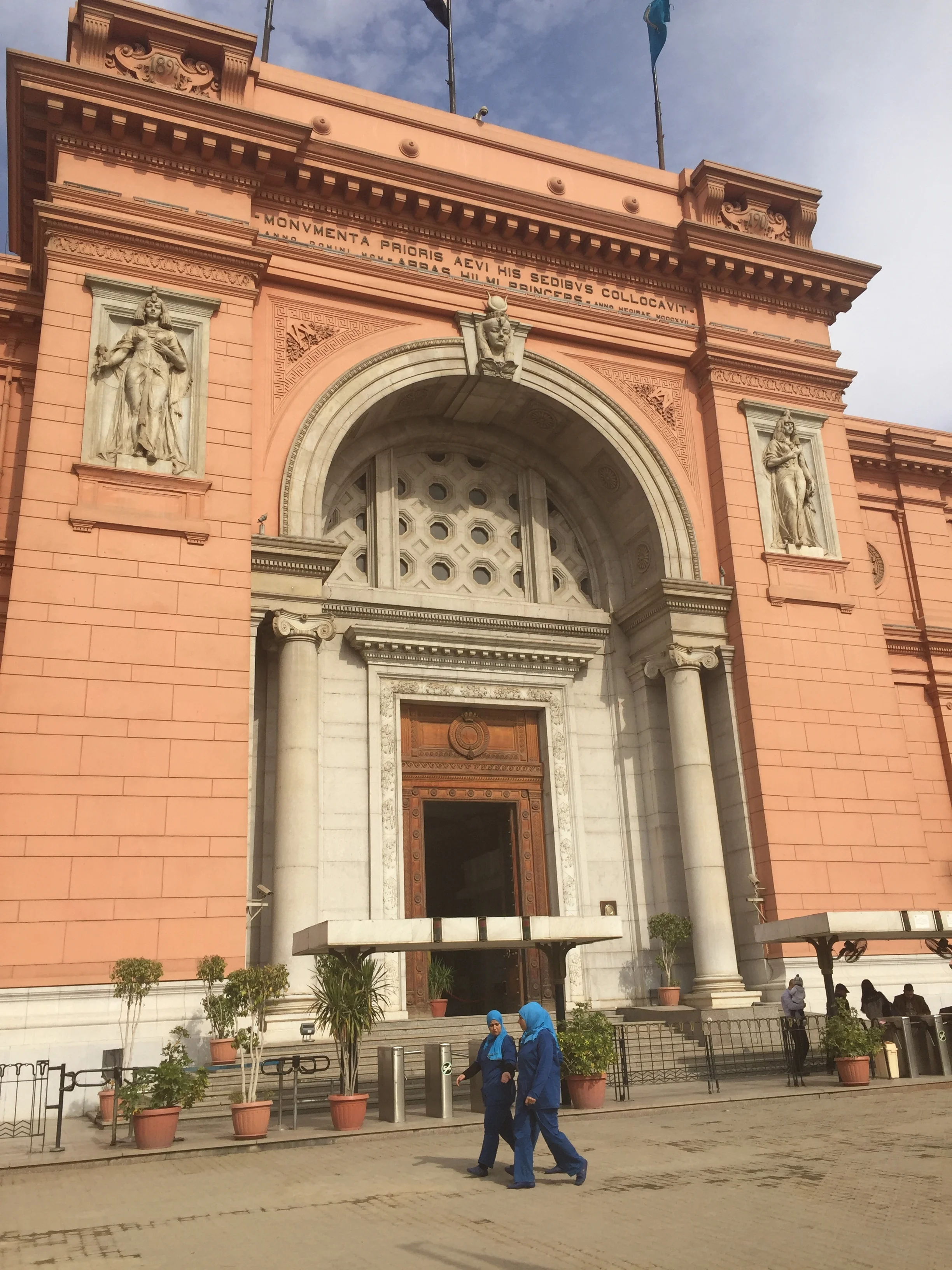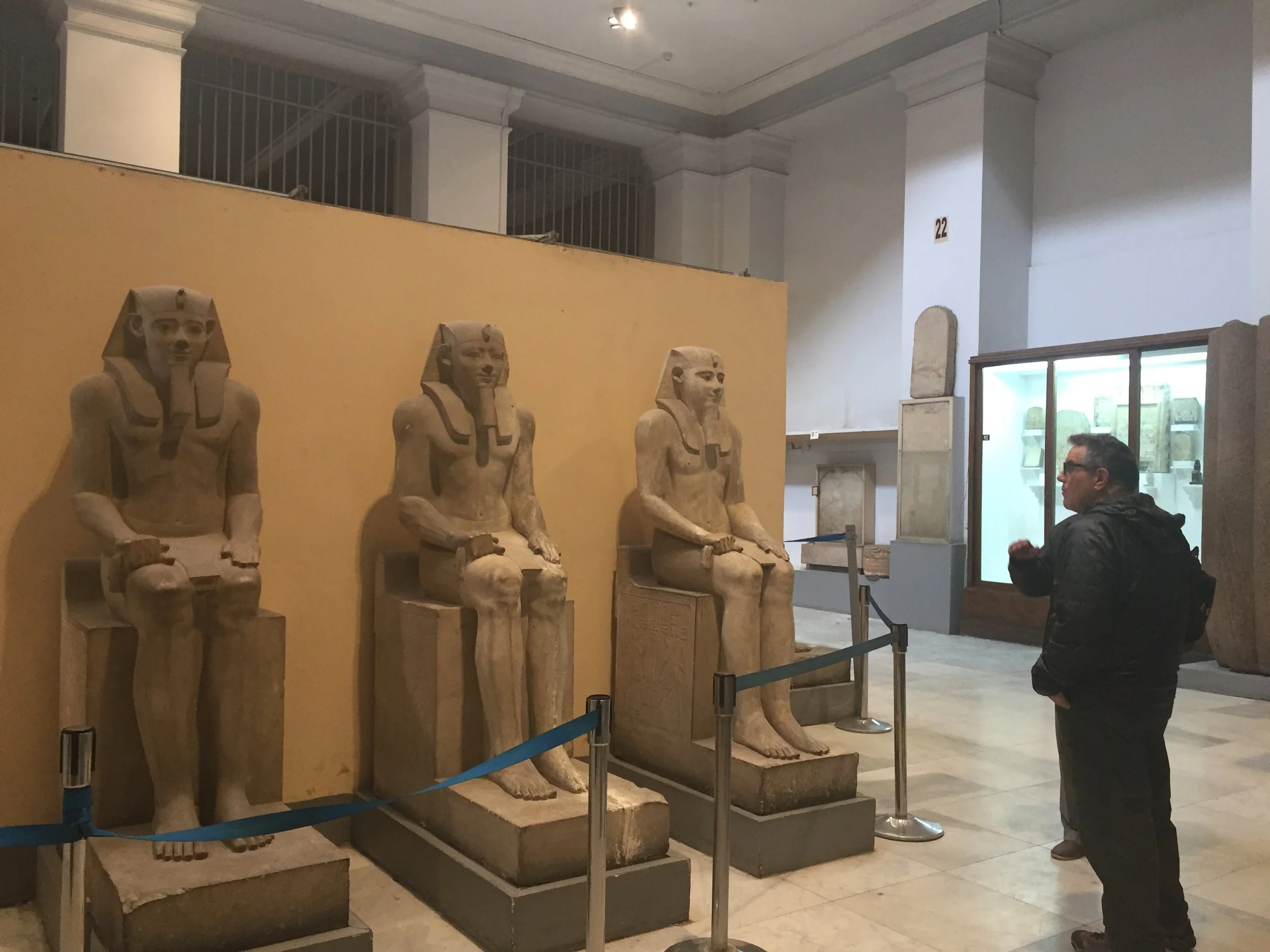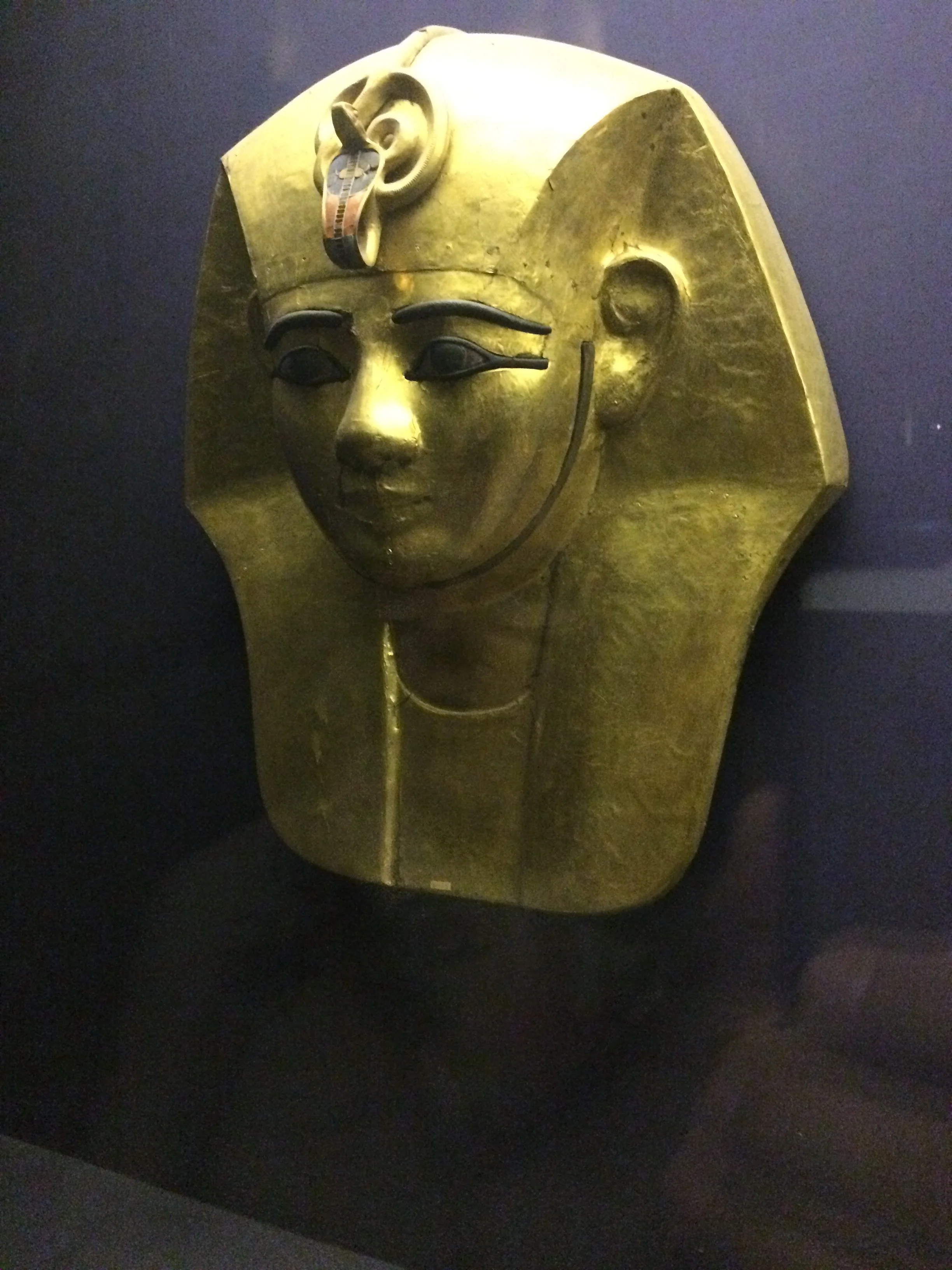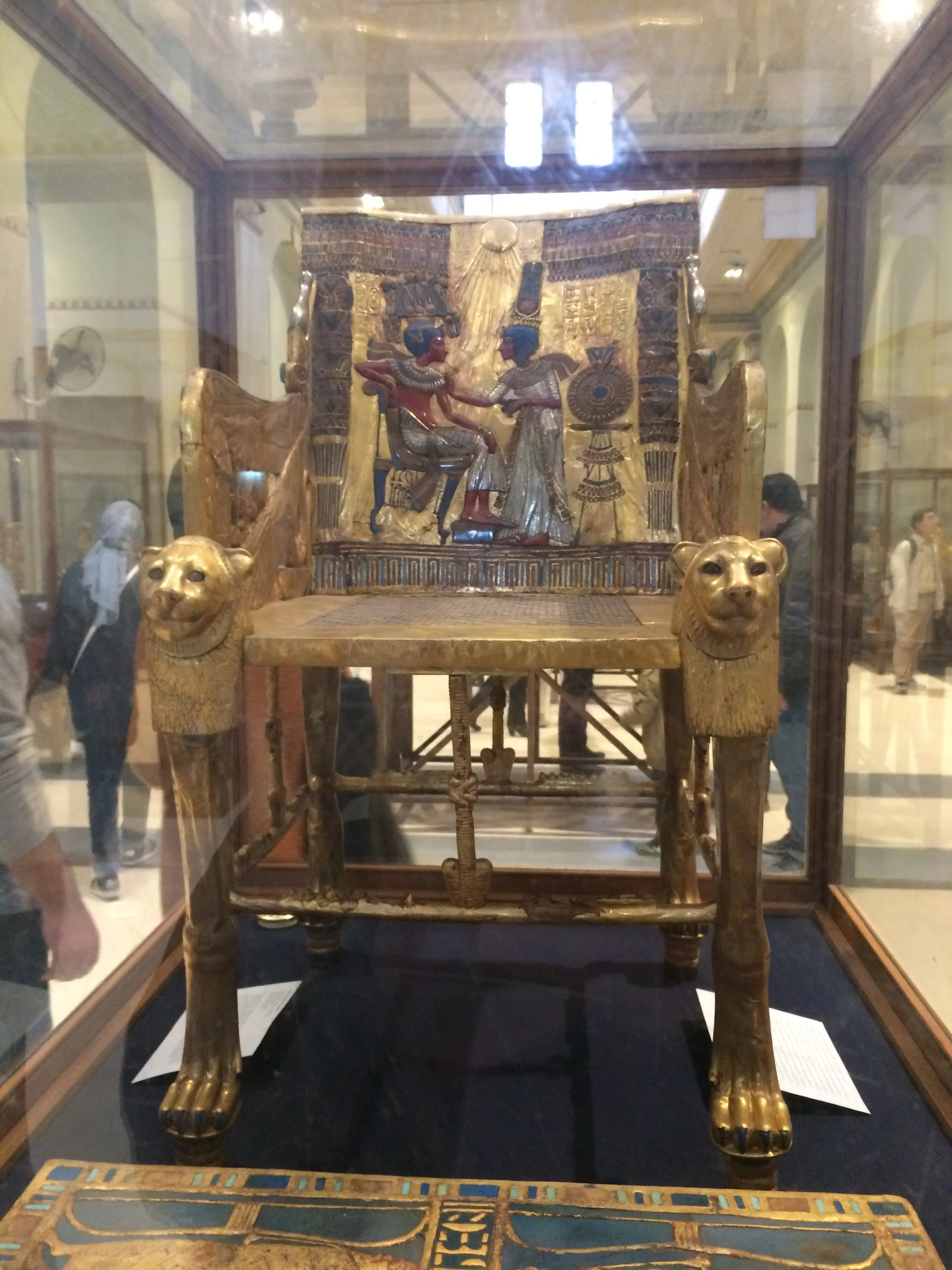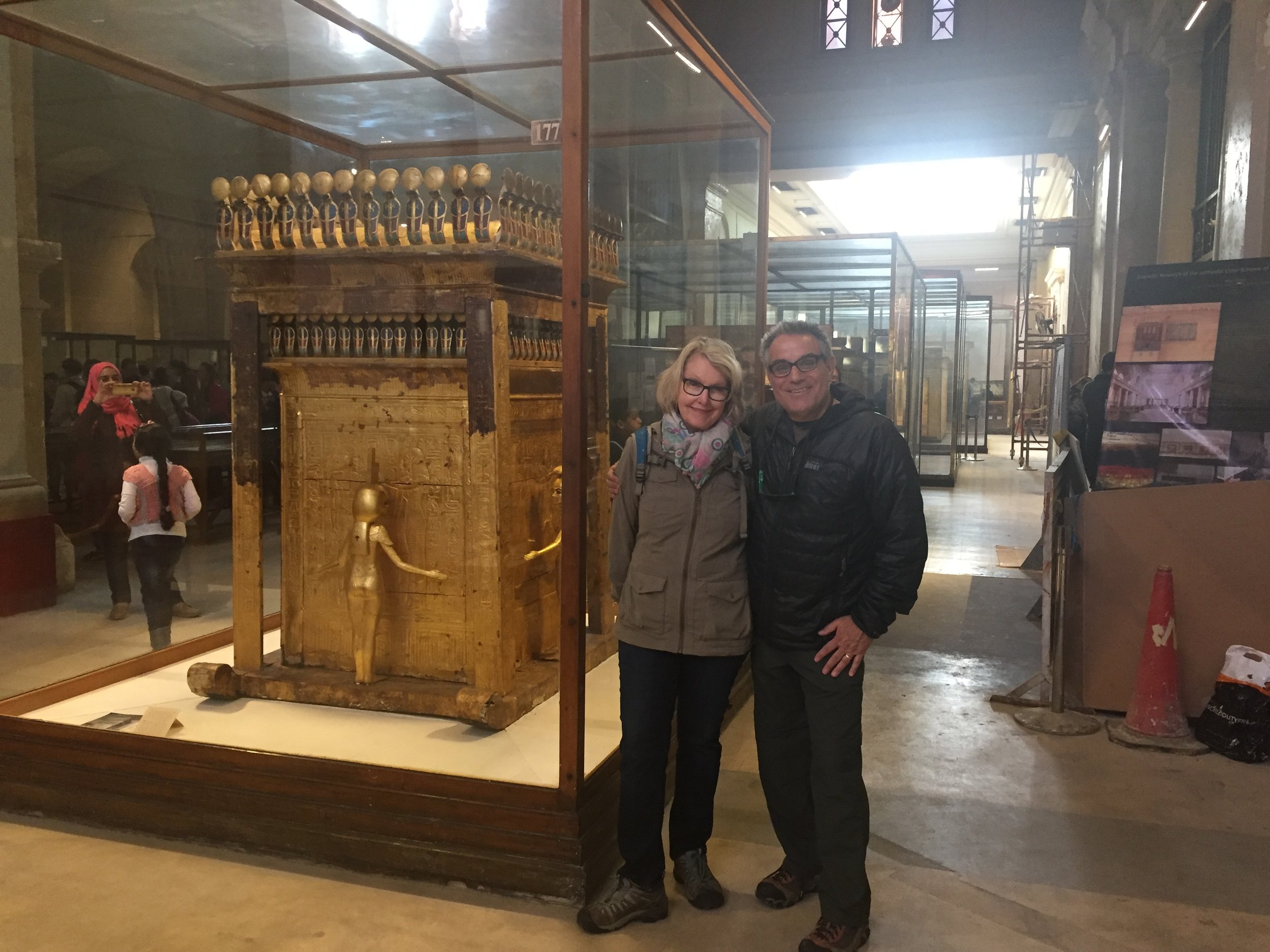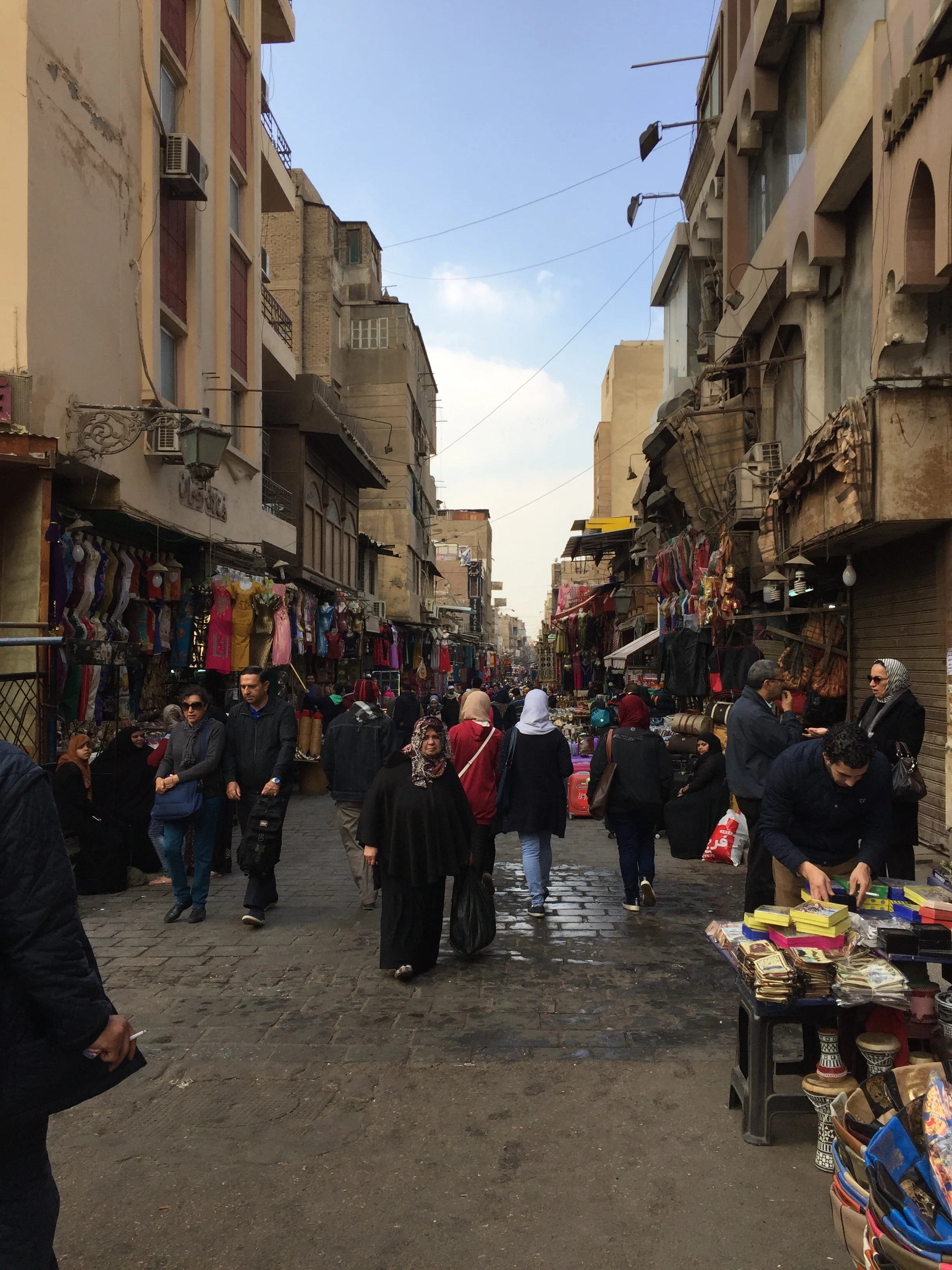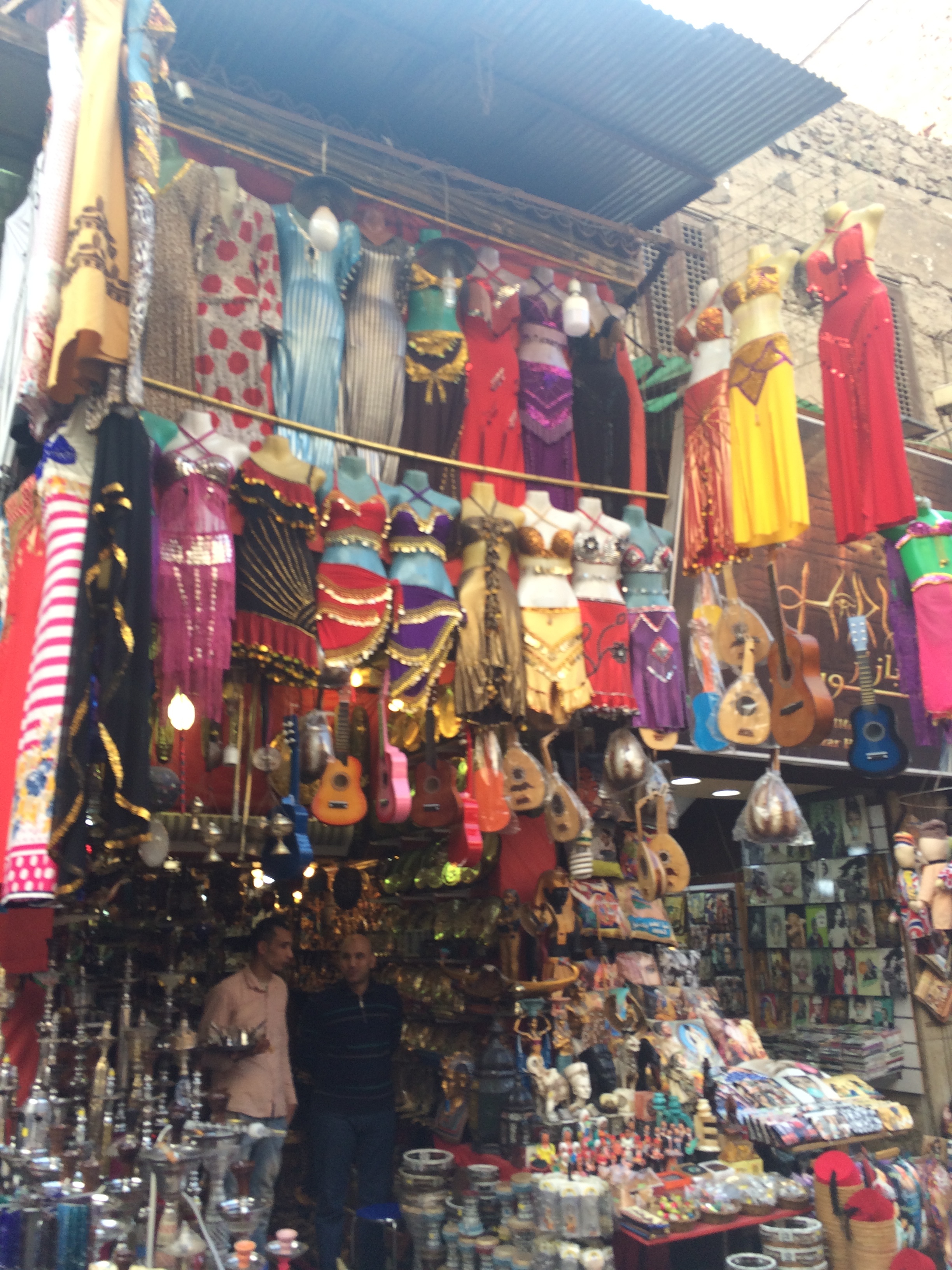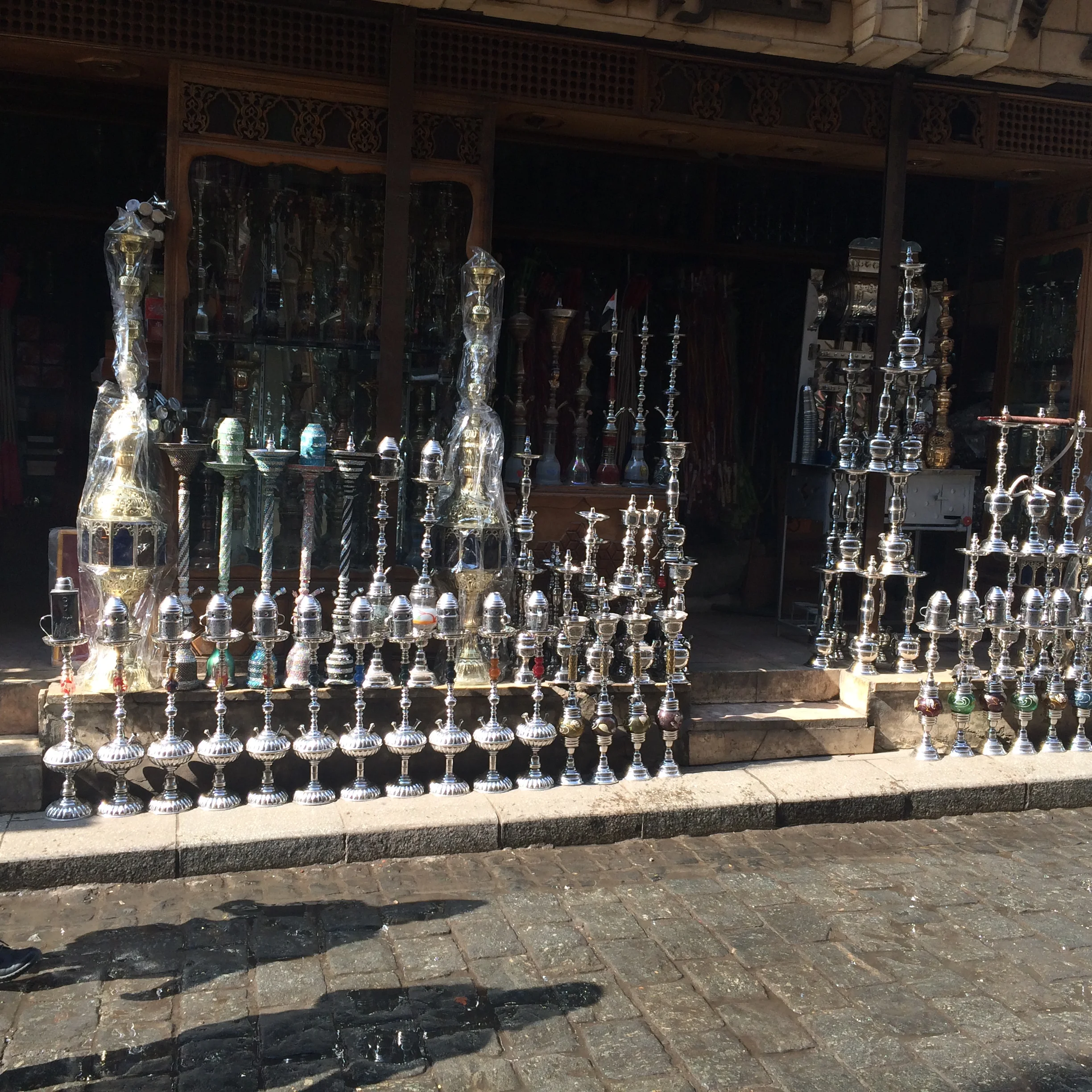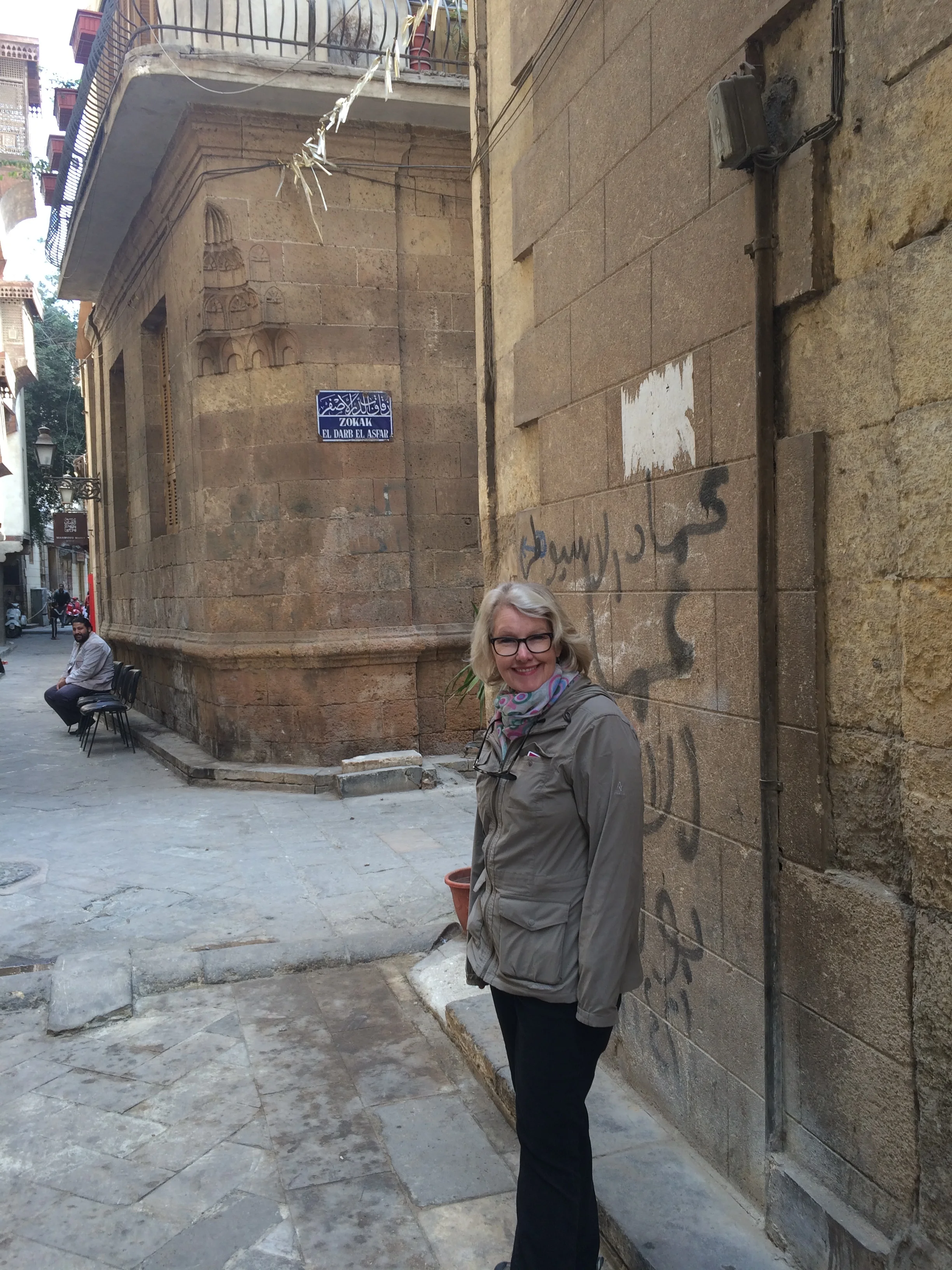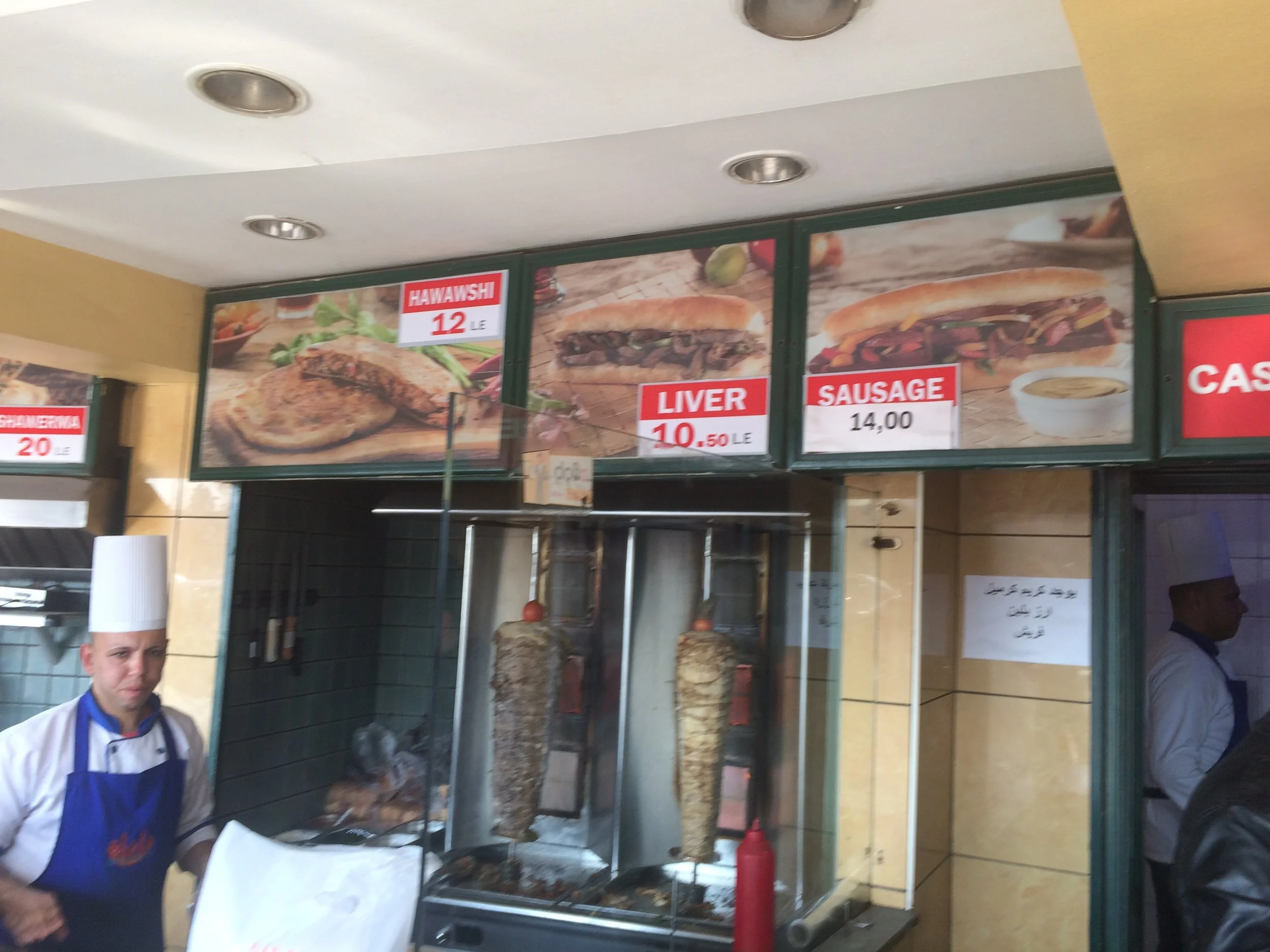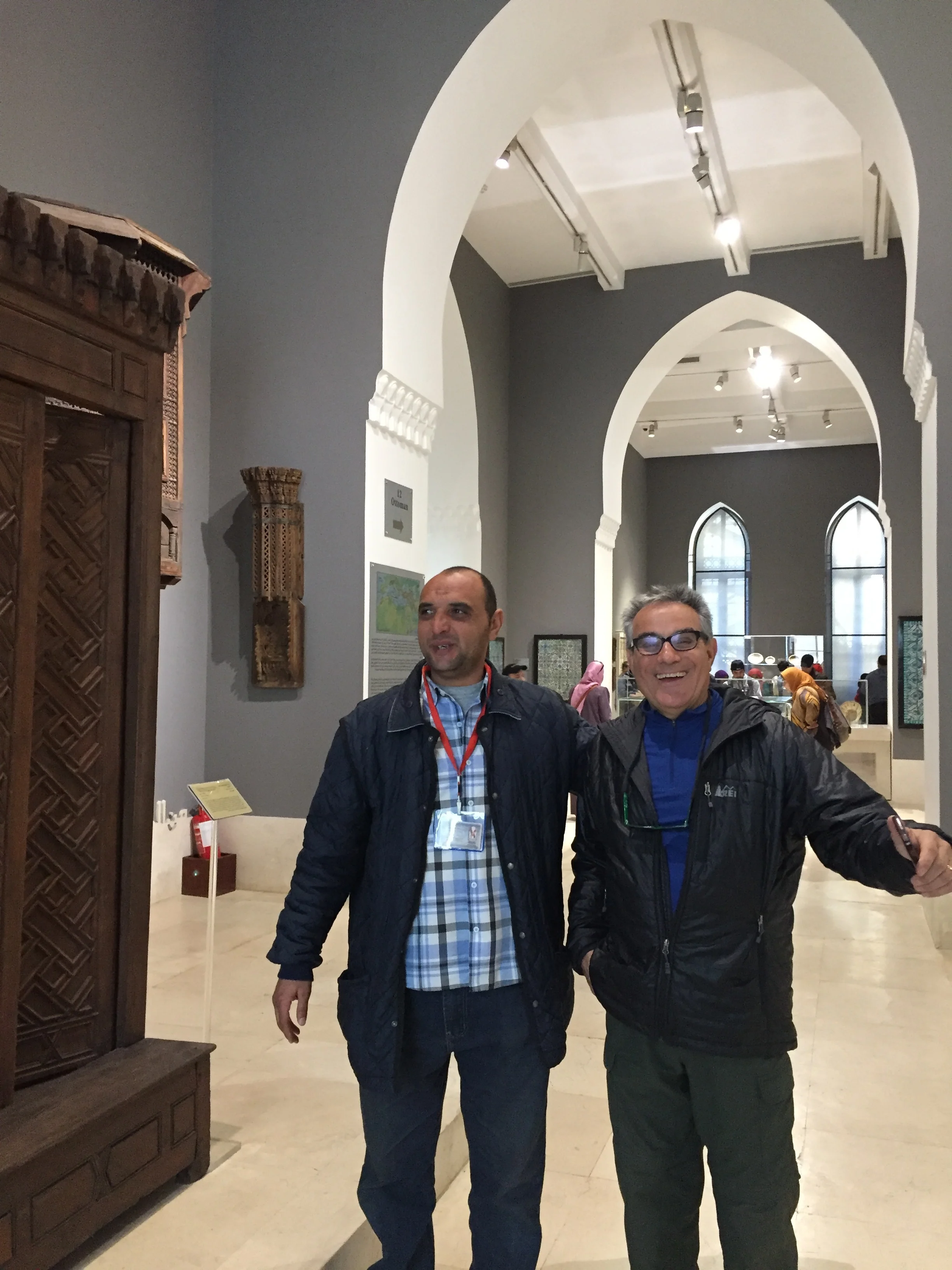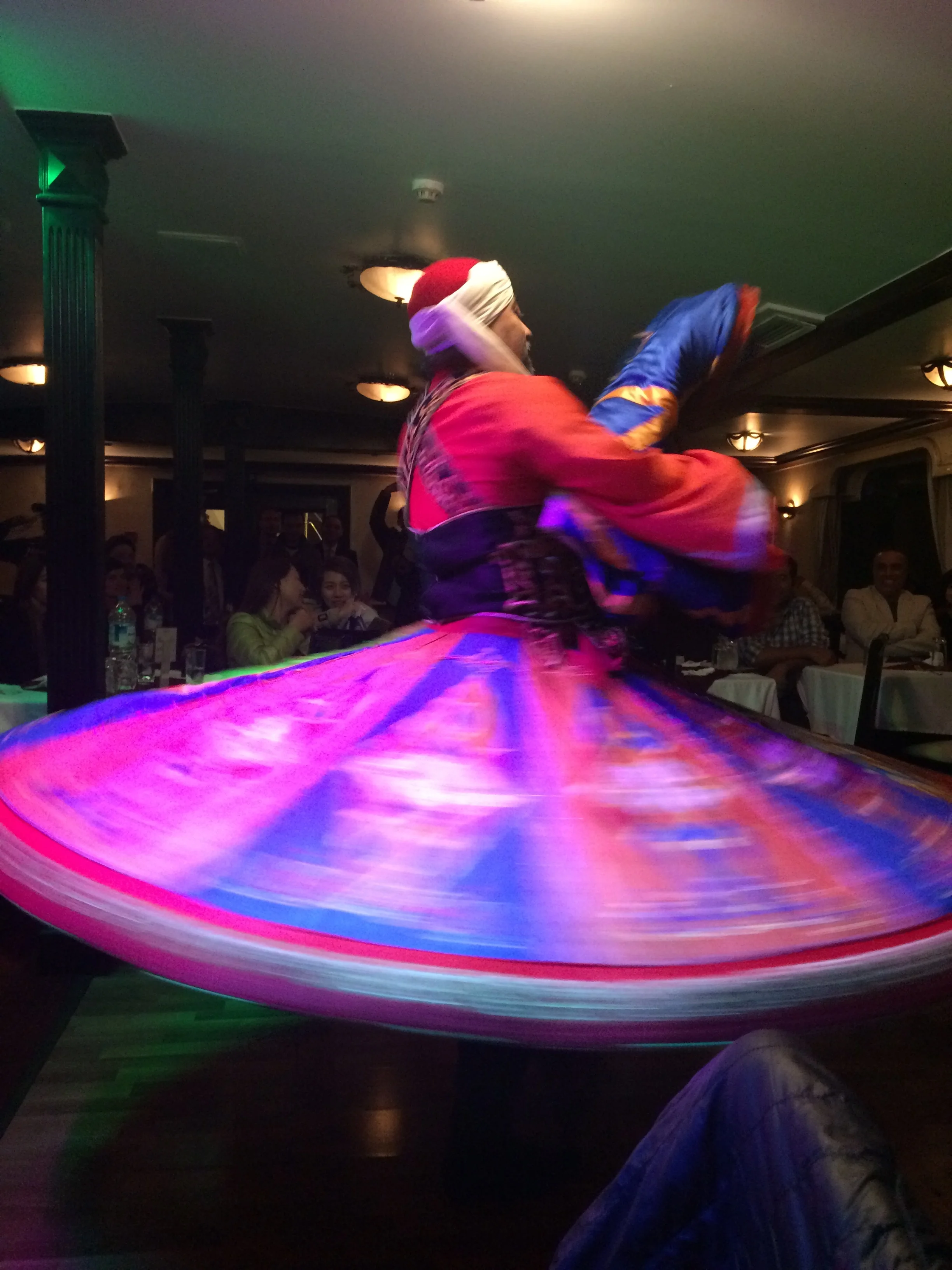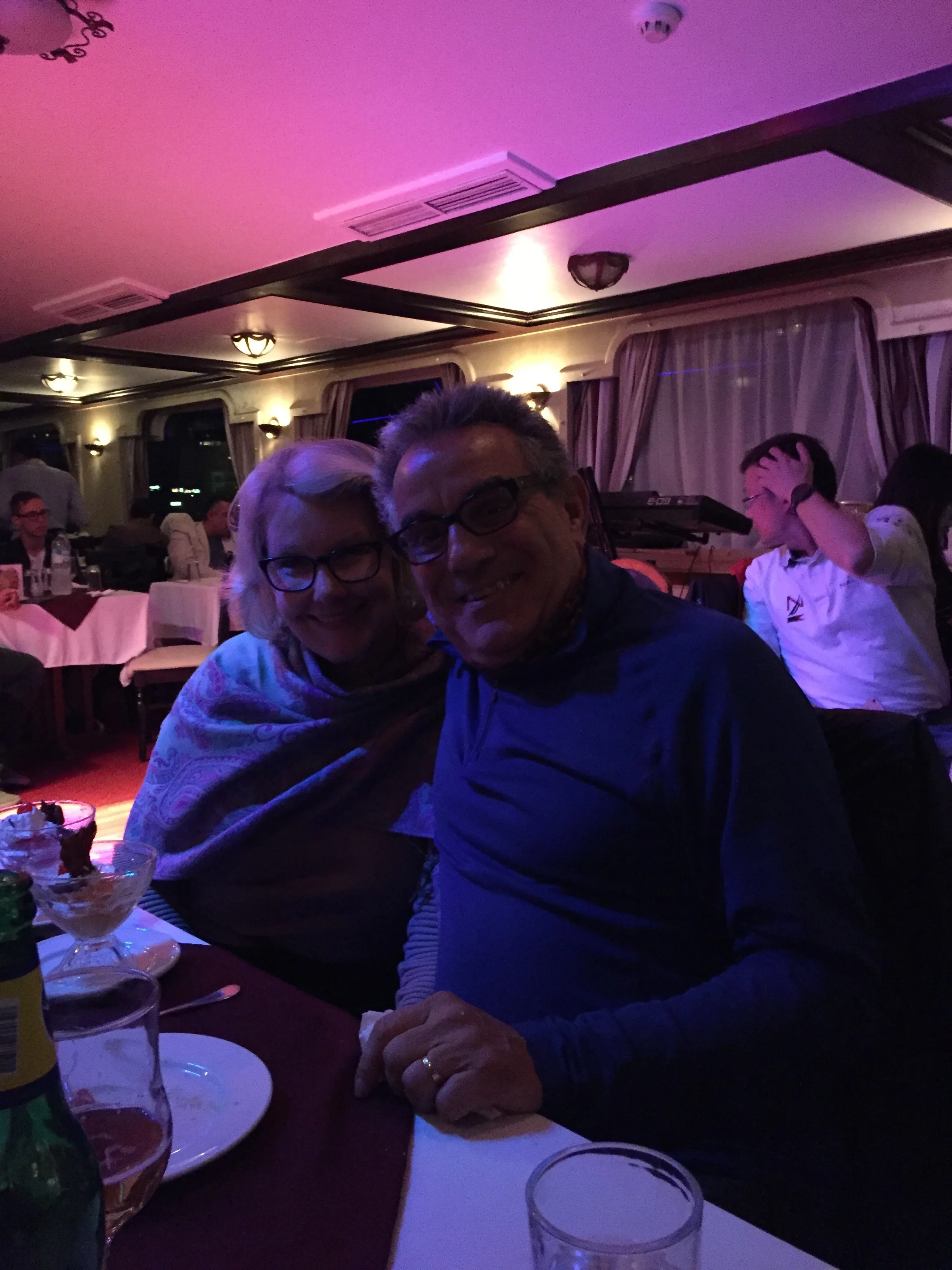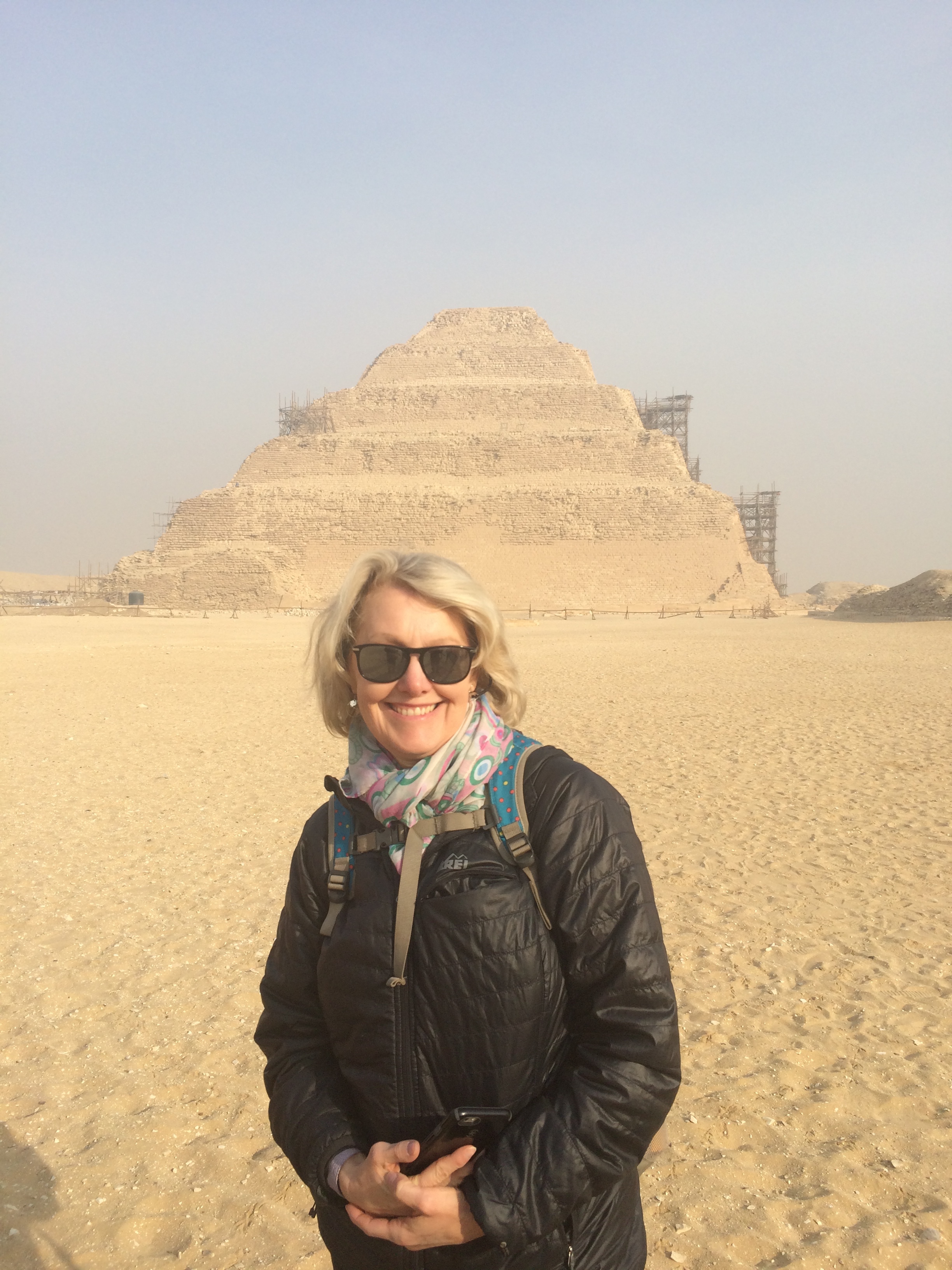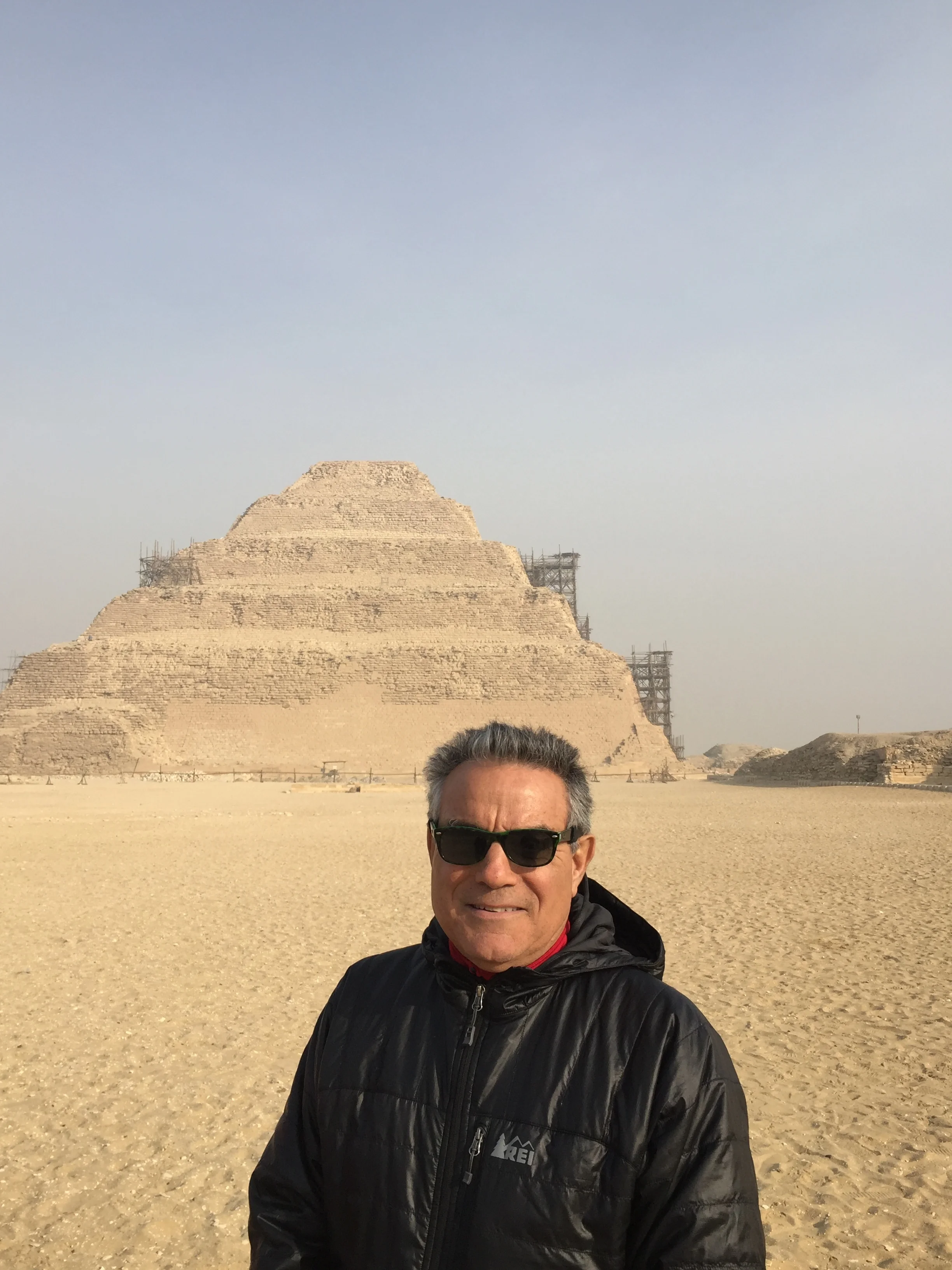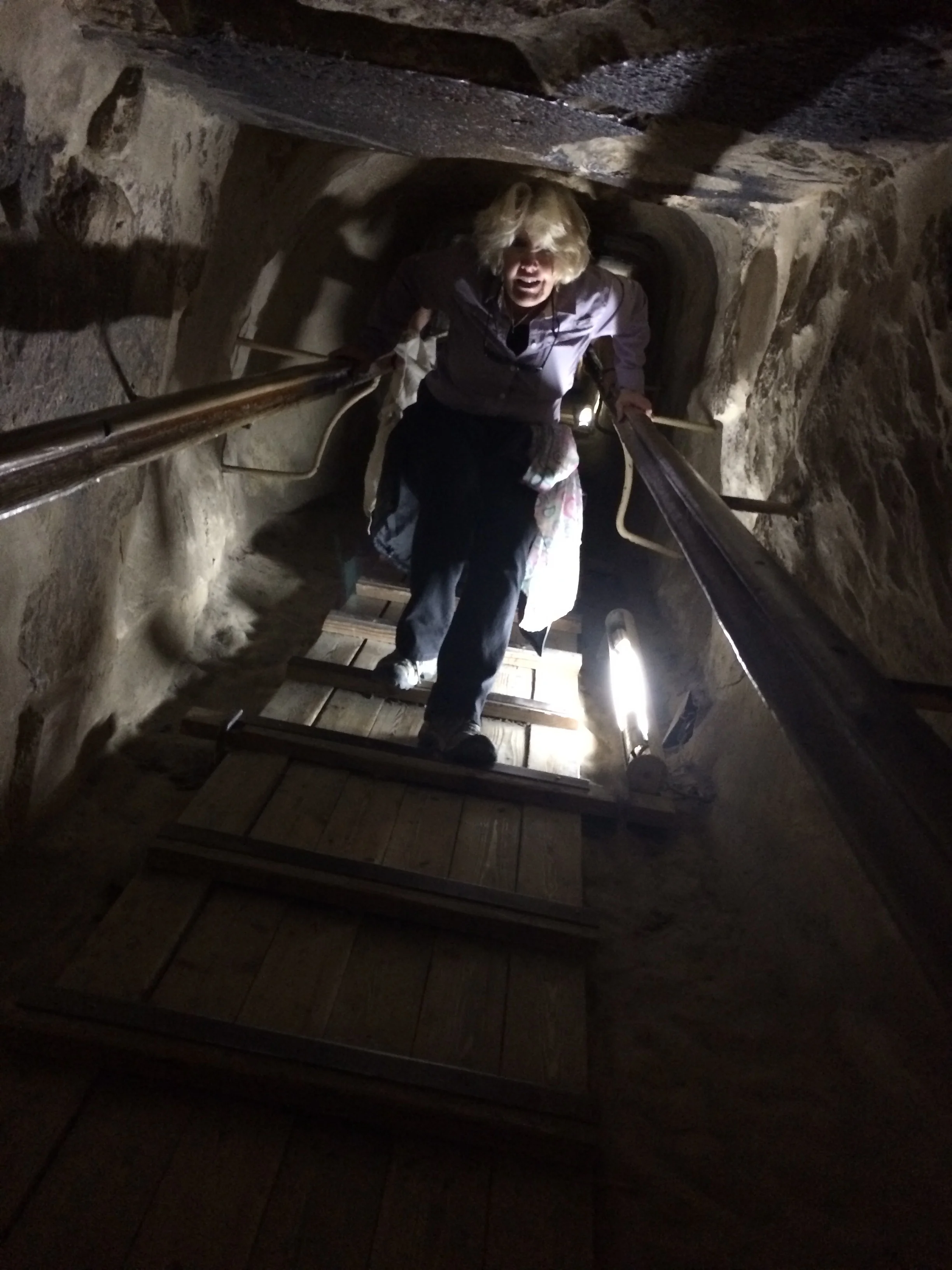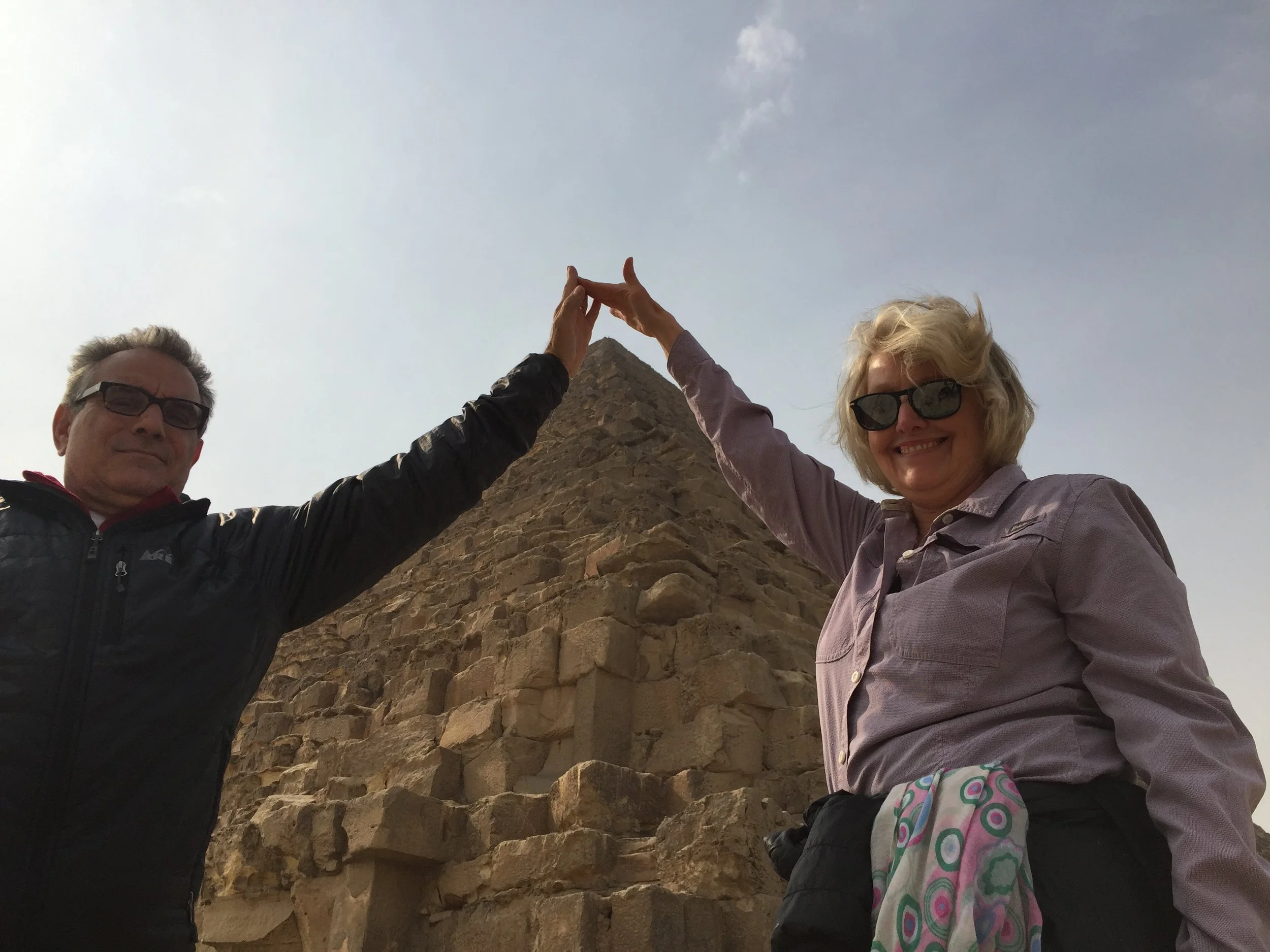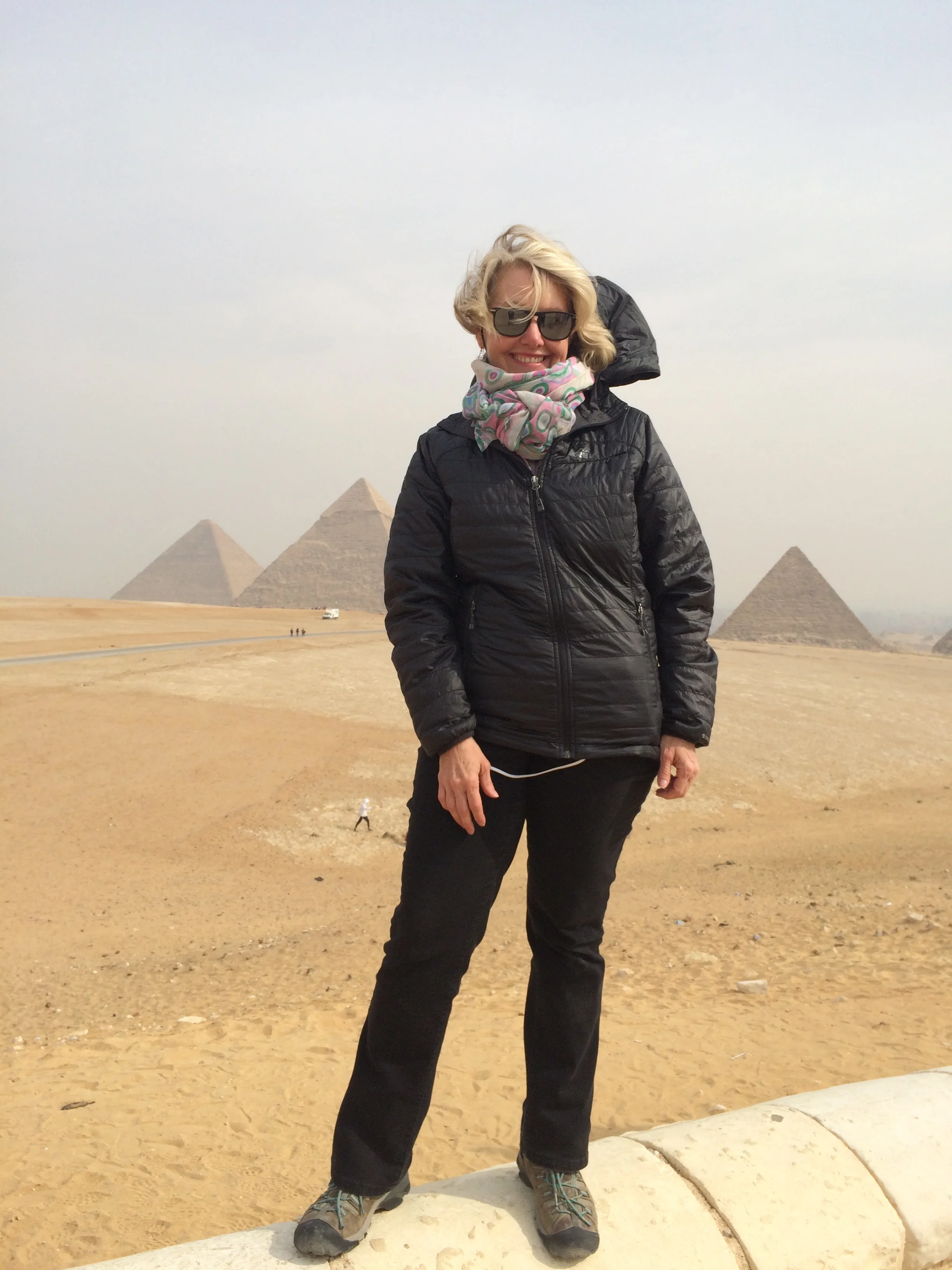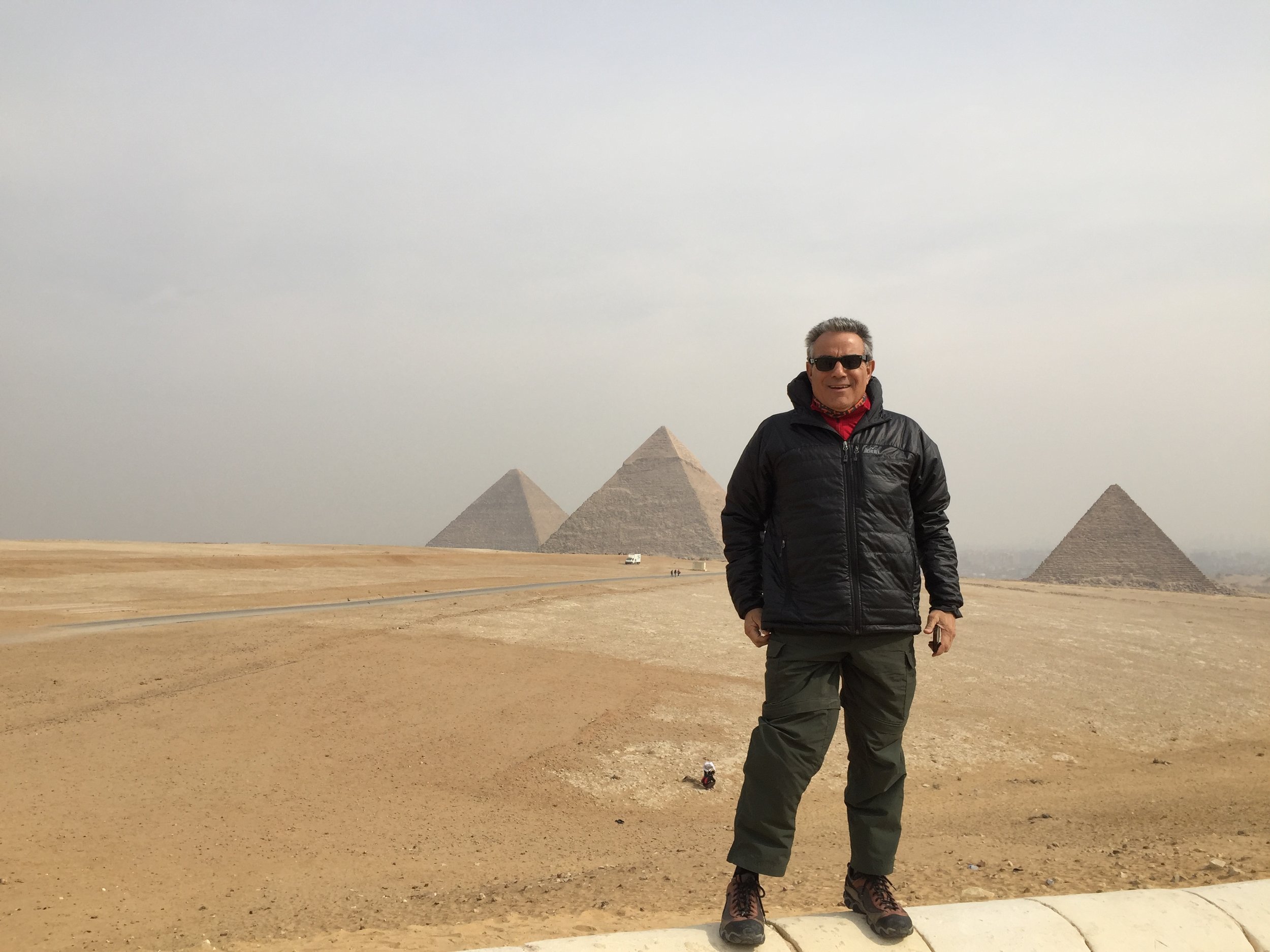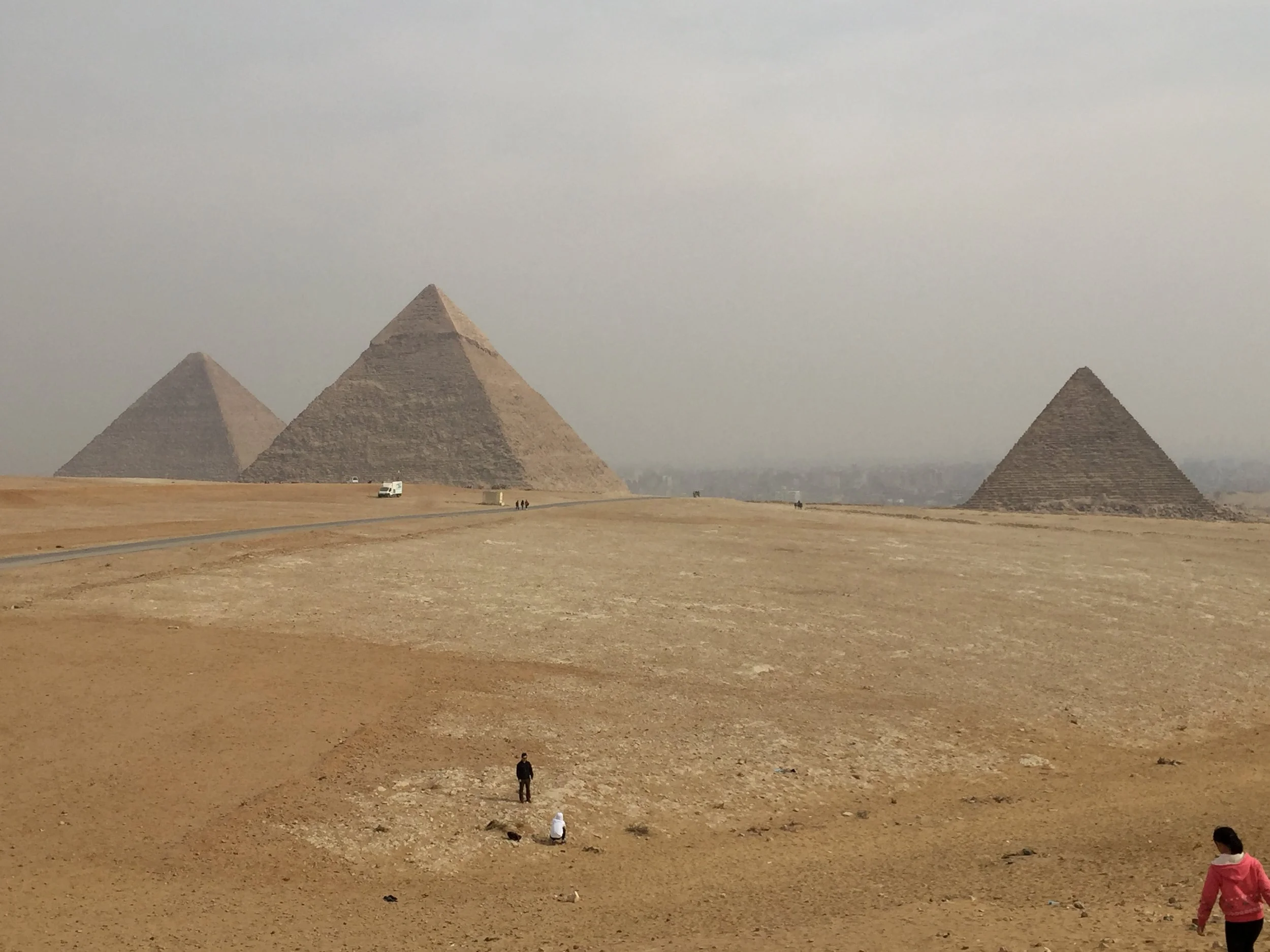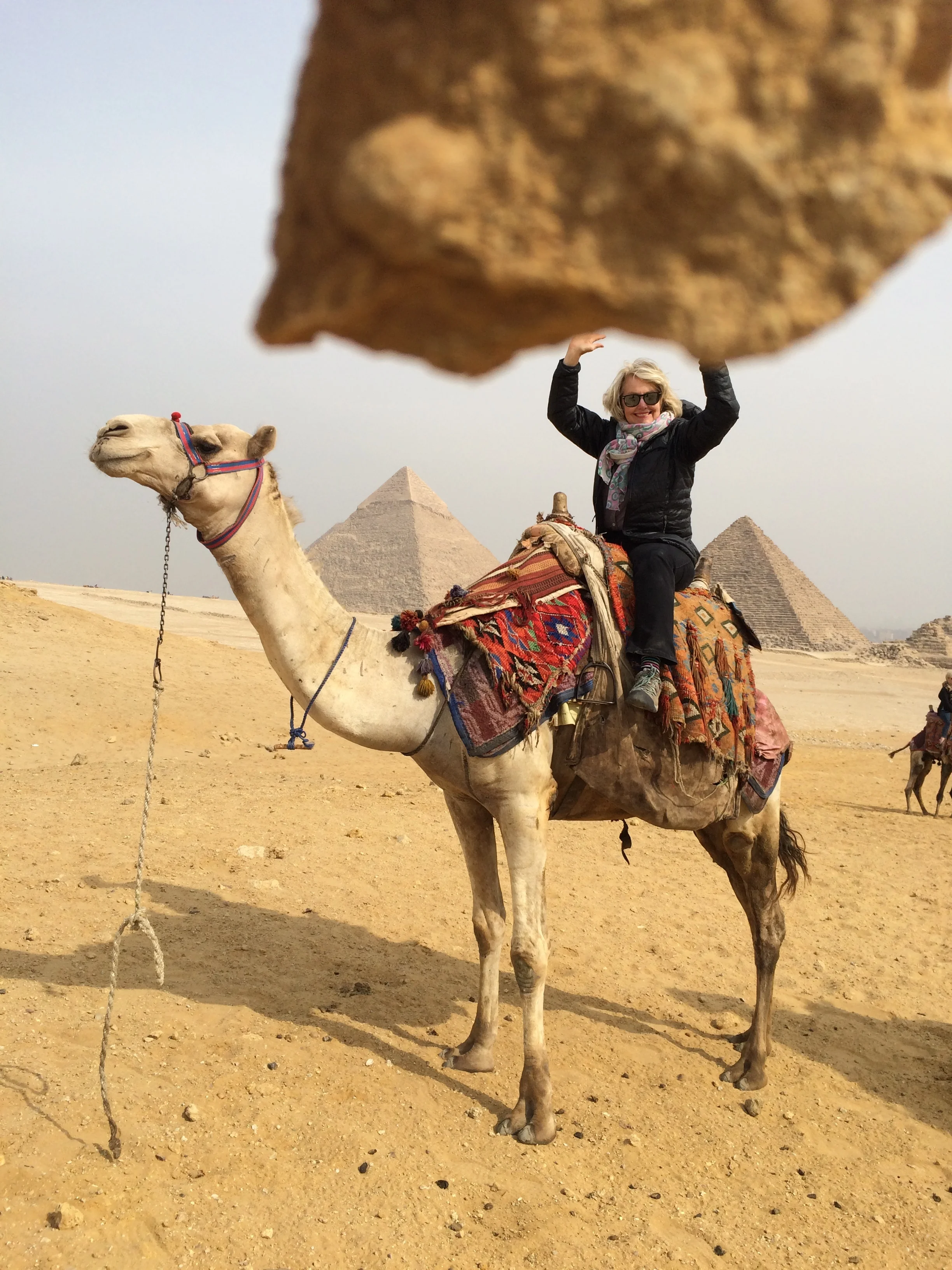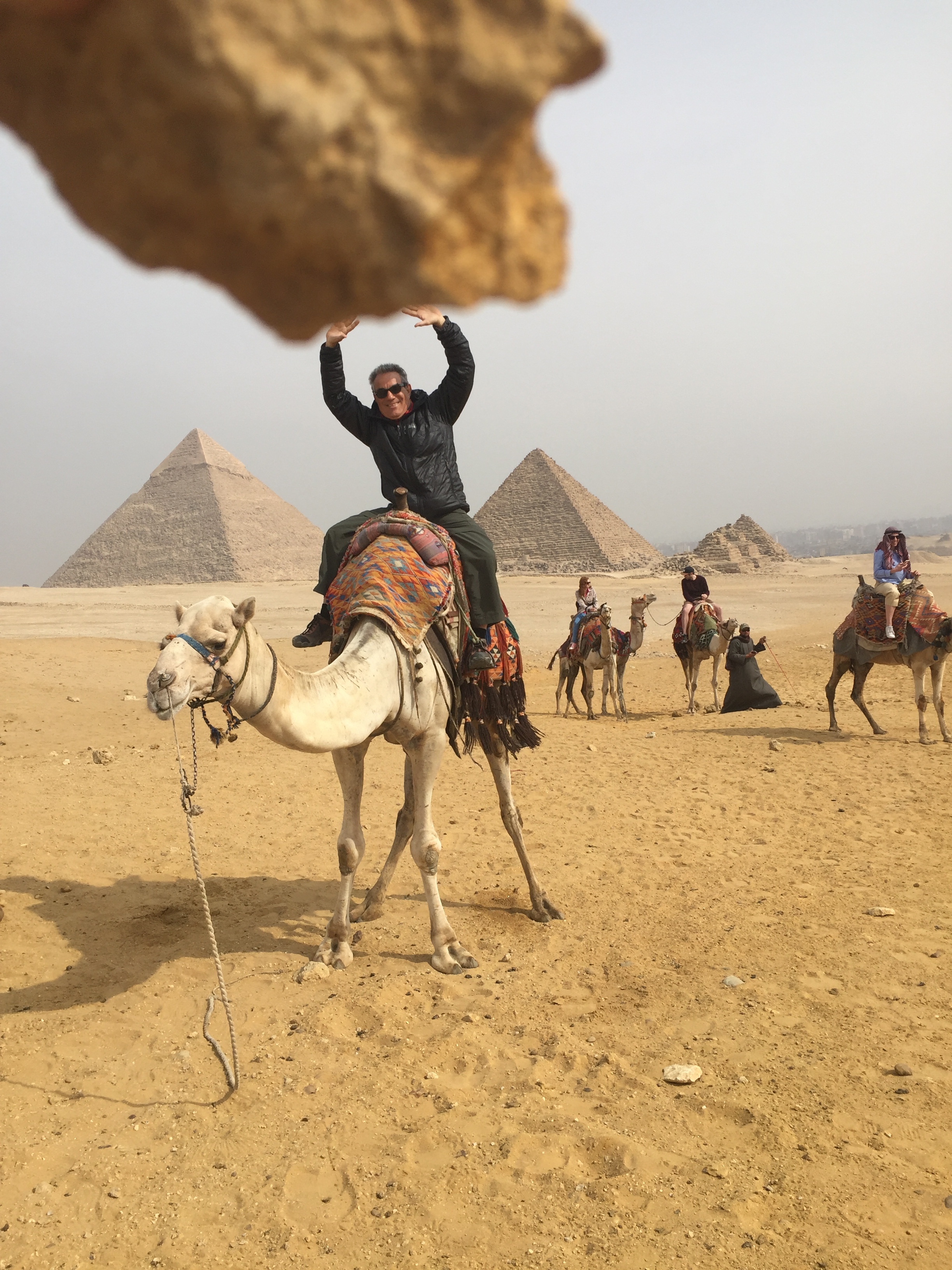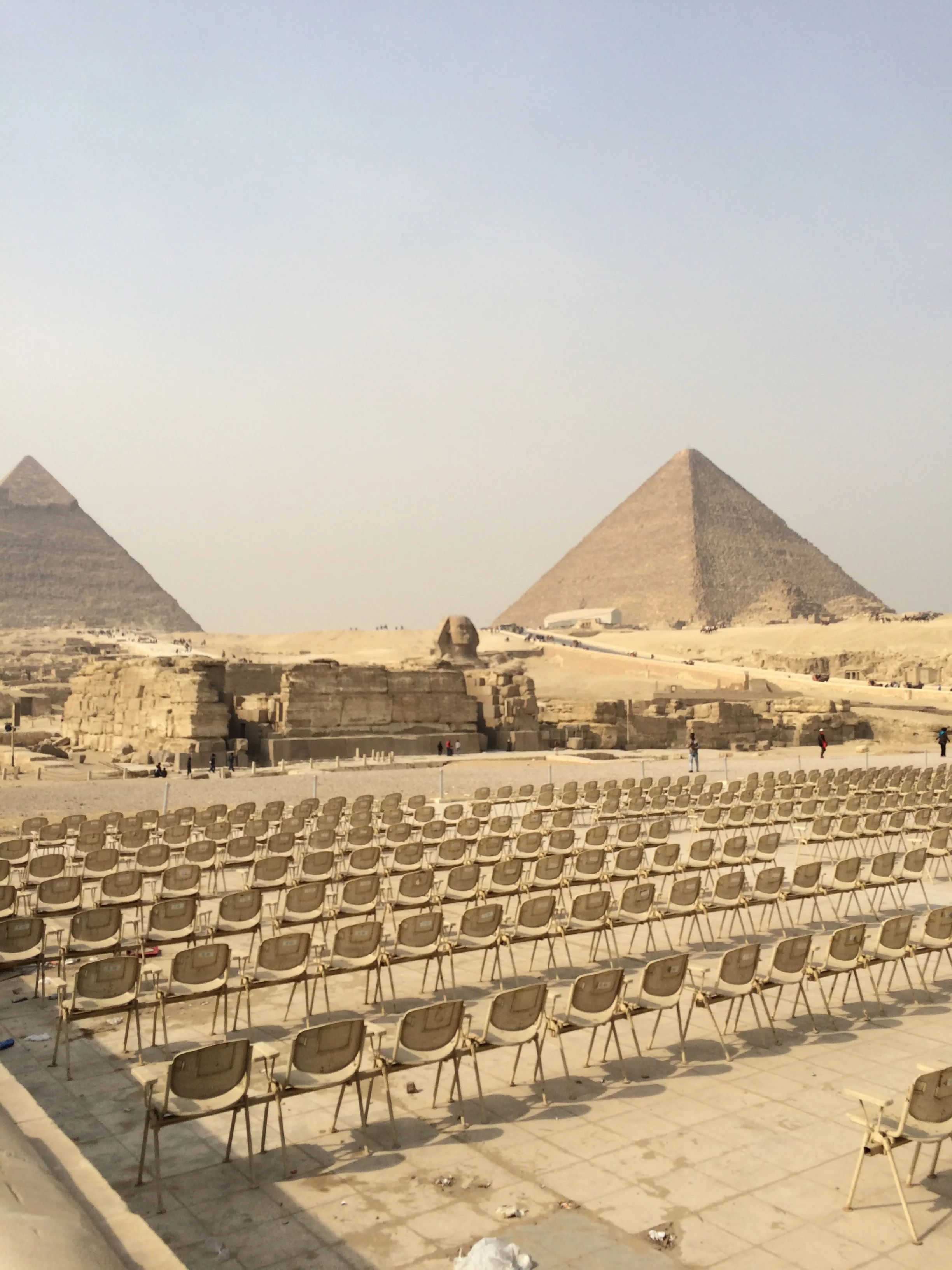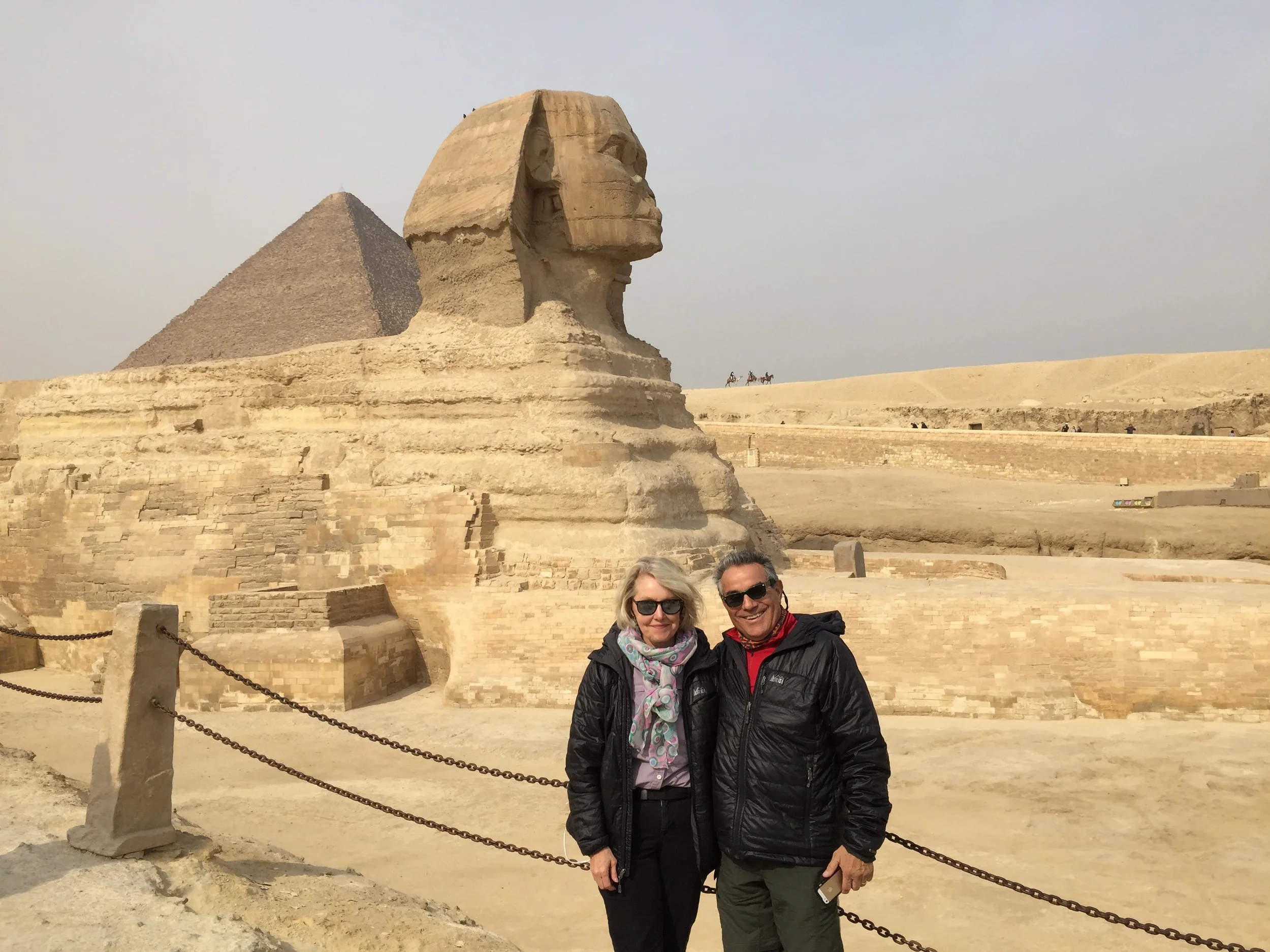For our next stop we are flying from Marrakech Morocco to Cairo Egypt. We will be in Cairo 2 days before our tour starts. We opted to use some of our Hilton point and stay at the main Hilton hotel downtown.
Overall the flight was good but this was one airport where all signs and the announcements were in Arabic only. We got lucky with a gate change, we met one other American traveler and together when all the other passengers got up and left we better follow.
The flight was about 7 hours. We were to be met by a shuttle from the Cairo Hilton. The charge was to be placed on our room. Our American friend needed a ride to the same area, so we ask our driver if she could share with us. It was ok for a cheap price, and we loaded up for the trip to downtown Cairo.
When we arrived at the Hilton into the parking lot we had to pass through a check point, where the underside and trunk of the vehicle were surveyed for explosives. We were allowed in and individually then passed through metal detectors with our luggage. Then a little ruckus occurred, our driver wanted cash payment even though we had a bill to give to the hotel.
The clerk interceded. Once sure we would not be double charged, we paid in cash for ourselves and the other American with us and was waiting alone in the car. We felt bad how long she was in the car. We told her the story and sent her off, instructing her not to pay anymore.
We went to the Egyptian museum on the first day. It was directly across the street but almost impossible to get to. The streets have no cross walks. So we moved from curb to curb between traffic with no set lanes. It is rather spooky and poorly planned. We made it and walked in the street around the high wall of the museum until we reached the front gate. This gate faces the Plaza where the first protests initiating the “Arab Spring” of 2011 began. Again, you walk through metal detectors and X-ray your bags for security. This was the first time of many future times when we observed security persons holding AR16 rifles. As we cleared security, a professorial looking man approached us for a guided tour. We accepted. This man was one of the best guides we have ever had. He directed us through this giant museum explaining the chronology of the Egyptian culture using the artifacts to weave his story. He made history come alive in a way that was memorable. At the end of our tour he was concerned about us and the crazy traffic and walked us back to our hotel. The Egyptian Museum is gigantic and old, as are the thousands of statues and artifacts representing the old, middle and new Kingdoms of the Pharaohs, with still thousands of pieces in storage. We spent a large portion of our time looking at the King TUT exhibit. The boy king died at 19, but he is famous to us because his tomb was discovered intact with all the gold, including the unforgettable mask.
Frank and the Guide
Our second private guide and driver picked us up at the hotel for the tour of the new Islamic Religious Art Museum that had been renovated and just recently reopened. Again the entrance was secured by X-ray and armed men. The title work, textiles, and wood carvings were elaborate. We had seen some familiar versions in Morocco and southern Spain. As we walked around the museum our guide explained the significance of the pieces. As well, we entered into a dialogue about the origins and growth of the Islamic faith. The guide was quick to point out that Islam through the Koran recognizes the Prophet Jesus and His mother Mary. Personally, we have read portions of the Koran, about 25 written passages that directly involve Jesus, usually in a dialogue with Muhammad. It is quite fascinating.
We then went to the Cairo open air market. We walked several streets with our guide that were easily accessible. The various shop keepers were welcoming but not burdensome. Later, we saw other market streets from our transport that were just packed with people, shoulder to shoulder, moving like a great wave. Some part of us wished we had been in the mass, but the reasonable side tells us the view, along with our easier walk, was the way to go.
We did visit a Papyrus paper store which displays art painted on this ancient, first ever paper.The shop keeper demonstrates the method of manufacture and then offers the paintings for sale. The process is interesting as the triangular plant stem is sliced, water cured, aligned, and pressed into sheets of paper. Once completed the paper has the strength of a paper towel, can be soaked and crushed, but will return to its original shape. The paintings, which mostly mimic the great symbols, stories, and language found at the pyramids and temples.
The Perfumery
Next, we visited a perfumery. Here there are bottles of pressed flower oils that make up the base fragrance of many perfumes he shops keeper points out there is no alcohol in his fragrances and his oils will not burn. This shopkeeper selected 4 different oils for us to apply and test. One drop will do you. Some oils have perfume fragrances and others are more therapeutic for ancient remedies. We both bought small vials of our favorites.
As the late afternoon approached our guide suggested we get something to eat. We stopped at an Egyptian, falafels, very yummy.
Later that night, we met our tour group and guide. Apparently many had been delayed on their flights, so only eight of a group that would grow to 24 went to a dinner cruise, with belly dancing and the dancing acrobats. This Egyptian belly dancer was an absolutely beautiful young lady with a professional band and routine and costumes. Then the acrobaticscame out with their swinging skirts and juggling all to music. It was all great fun. The food and beer was classic Egyptian.
The next morning, we met the other 20 group members as we entered the bus. Here was the chance we have been waiting for, to actually walk among the Pyramids of Giza, constructed more than 4000 years ago.
We first traveled to see the Pyramid of Khafre. The structure is massive and we were massively impressed. Surprise to us, this site had an entrance to the burial chamber that was located under the Pyramid, like a small basement. Our group all entered. The walls closed in as we bent over head to knees to navigate the narrow corridor going down. Some of us had a shortness of breath. We then reached the burial chamber and stood up. The chamber with crypt was large enough to fit us all and the walls and crypt were covered with hieroglyphics.
The Great Pyramid of Khufu, aka Cheops, was the next venue. This is the moseleum of Pharaoh Khufu. The burial chamber is not underground, but up in the middle of the structure. The doorway was discovered and is open. We stooped inside the entrance corridor, albeit somewhat claustrophobic, bent down and walked through the entry corridor. Then moving through an escalated passage we were able to stand fully and walk the lengthy trapezoid corridor to the chamber. Thankfully the passage is lighted, but most of our companions did not go in. The engineering of the stone blocks inside the corridor are seamless, seemed polished, and overlay each other like 3 layers of shingles on each side. Each block weighs 2.5 tons. The total number of blocks is 2.3 million. The Chamber itself is large and has polished alabaster stone walls without etching and the Pharaoh’s crypt. We had a great “Indiana Jones” experience. No photos inside this Pyramid. See some other photos.
Next stop was our camel ride. These two grand pyramids sit within a complex of mausoleums which are housed in many other smaller pyramids that can be seen on the site. We had the fun of a camel ride, our second in 2 weeks, of riding around the exterior of the site to observe its great size and expanse. It is pretty amazing. Egyptian camels are about twice as tall, and twice the fall, as the Moroccan ones we had rode and have a slightly different hump placement that allows for more comfortable seating.
Next stop, The Sphinx. We completed this site by visiting the ancient entrance to the Khafre’s valley temple guarded by the Lion bodied Sphinx with the human face. This was impressive, even if not quite as big as expected. We were able to walk up the back of the Sphinx to get near its head. Originally, the Sphinx was the large main guardian of the walkway to the tombs which was aligned on both sides with a series of smaller statutes. The entry way was spectacular, but in partial ruins, and would have been over the top if intact.
This was a long day. We grabbed some Egyptian grub and started our bus trek to the next great archeological site in upper Egypt in Luxor. We were accompanied by a plain clothes policeman sitting in the front seat. He wore a suit, seemed very professional, but did not speak with us. We also had a local police escort for each district we drove through. The trip was scheduled for 9 hours, a late arrival, but took 12 hours, arriving in Luxor at 5 AM. We had bus trouble from bad gas or some leaking on the expressway. We were stranded on the side of the road awaiting service for several hours. However, within a short time of our break down we were joined by 6 additional police officers with M16's, they secured the bus using orange pylons and directing road traffic away from us. Did we feel safe? we will talk about it later.
Finally, we checked into our hotel so late that the tour changed the itinerary with the instruction to be up and out to the bus again at 9 AM, so we could travel to the city of Aswan. Talk about exhausted, but we pulled it together and got on the road to continue the adventure.
Next Stop, Aswan Egypt
